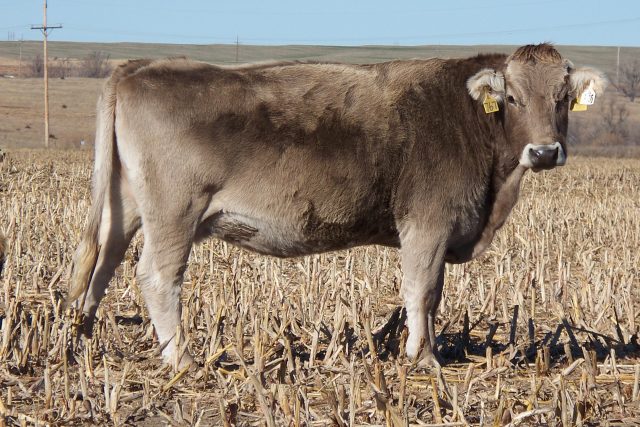Type the name of the breed you're looking for below
[wpdreams_ajaxsearchlite] Don't see the breed your're looking for? Click here and let us know!
Braunvieh/Brown Swiss cattle
| Place of Origin | Switzerland |
| Origin | Most dairy historians agree that Brown Swiss or Braunvieh cattle are the oldest of all dairy breeds. The beautiful brown cows were developed in the north-eastern part of Switzerland. Bones found in the ruins of Swiss lake dwellers date back to probably 4000 BC, and have some resemblance to the skeleton of today's Brown Swiss cow. Documentary evidence shows that the Benedictine monks residing at the Einsiedeln Monastery started breeding these cattle as early as approximately 1000 years ago. The canton of Schwyz was the scene of most of the early improvement of the Brown Swiss, and in Switzerland the breed is often referred to as Schwyer or Brown Schwyzer. All the cantons in which the breeds originated are inhabited by German speaking people, and apparently large cattle were brought in from Germany to improve the cattle of Switzerland, which until about 1860 were often lacking in size. And for that fact the Swiss Brown is also known as Braunvieh. Many people refer to Braunvieh as Brown Swiss and want to know the difference between the two. Brown Swiss dairy cattle were in fact developed from the Braunvieh beef cattle. Braunvieh was an extremely good milking beef breed and, many years ago, some animal breeders selected the best milking Braunvieh and began breeding these selected individuals for milk production. After many generations the dairy type was developed, and thus the Brown Swiss dairy cattle. Switzerland, the native home of the Brown Swiss is a very rough and mountainous country with a total area of about 15,940 square miles. However, approximately 25 percent of the area is covered with rocks, lakes, rivers, snow-capped mountains, and glaciers, and there are only about eight million acres of productive land of which one half is used for hay and pasture. Switzerland has been noted as a cheese producing country for many years, and in the summer many of the dairy herds are taken into the mountainous regions and are grazed on the abundant pastures and meadows that result from the heavy rainfall. A background of extreme terrain and weather has produced a cattle breed world renowned for many definitive characteristics. Today the Brown Swiss is the second largest dairy breed in the world with a reported over 8 million registered cattle and the world population estimated at over 14 million head. |
| Purpose | Braunvieh are known for their excellent milking abilities and meat quality. |
| Appearance | Braunvieh are various shades of brown, predominately mousy brown, but ranging from light brown with gray to very dark brown. The border of the muzzle is very light, as is the poll, and often a lighter colored dorsal stripe is seen. The udder and inside of the legs and underline also being the lighter shade. A darker, smokier shading is often evident around the shoulders and neck compared to the rest of the body. The switch of the tail is dark brown to black. The skin is pigmented, the muzzle is black, and the hooves are dark and very hard. |
| Horns | Naturally Polled (hornless) or has small horns |
| Cows Average Weight | 544 - 680 kg (1,200 - 1,500 lbs.) |
| Bulls Average Weight | 953 - 1134 kg. (2,100 - 2,500 lbs.) |
| Other Considerations | They are also very docile and easy to work with. |



